Jonathan Holstein and Piers Johnston are the creative minds behind the "Waldwand" project. Their innovative approach to green facades could sustainably change the urban landscape as we know it.
In this interview, they give us insight into their work, their vision, and how they developed their ideas into prototypes at Happylab. For them, Waldwand is more than just a technical project—it’s their contribution to a more sustainable and livable future in cities. Jonathan and Piers show how innovation and passion can create societal value.
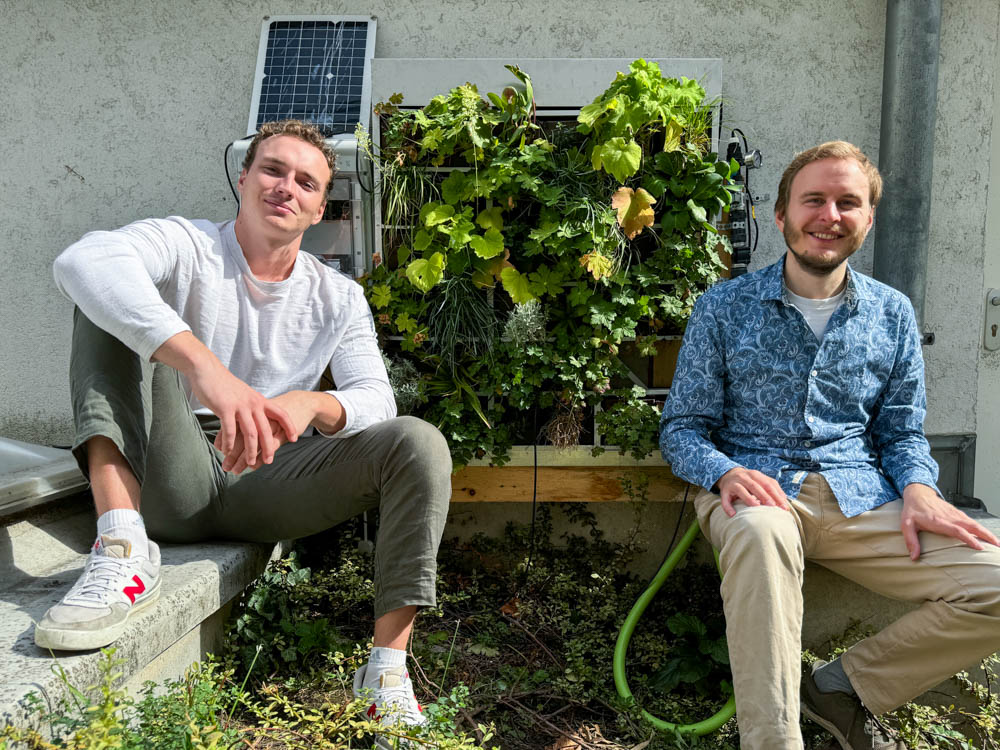
What makes you makers?
Jonathan: I’ve always loved tinkering and fixing things. A few years ago, I built a bed system for a VW van, a folding system for the trunk, allowing you to sleep in the van without removing the seats. At some point, I also started hacking the car radio of an old Berlingo so I could play music from my phone. I just enjoy tinkering and want to understand how things work. Early on, I bought a 3D printer to print parts for my studies and everyday life. I like to try things out and be hands-on.
Piers: I don’t think I’m a maker in the classic Happylab sense. But the German word for maker is “Macher”. And my friends have always called me “Macher.” I think that wasn’t always meant positively (laughs). I definitely come more from the entrepreneurial side; I always wanted to implement ideas and try new things. I founded my first business at the age of 15 and have been experimenting with different things ever since. Our project “Waldwand” is the first one I’m really pursuing with a larger vision behind it.
Tell us a bit about your background.
Piers: I studied economics—socioeconomics, to be exact. My interest in it is family-driven—there was always a lot of discussion about politics and economics at home. My parents were also self-employed, which surely sparked my interest in entrepreneurship.
Jonathan: I’m an architect and chose to study architecture in Potsdam because I wanted to do something creative and build things. As an architect, you have to be hands-on, know a bit about everything, and be interested in various things. In my master’s thesis, I dealt with the topic of green facades and how they can be used to shade and cool buildings.
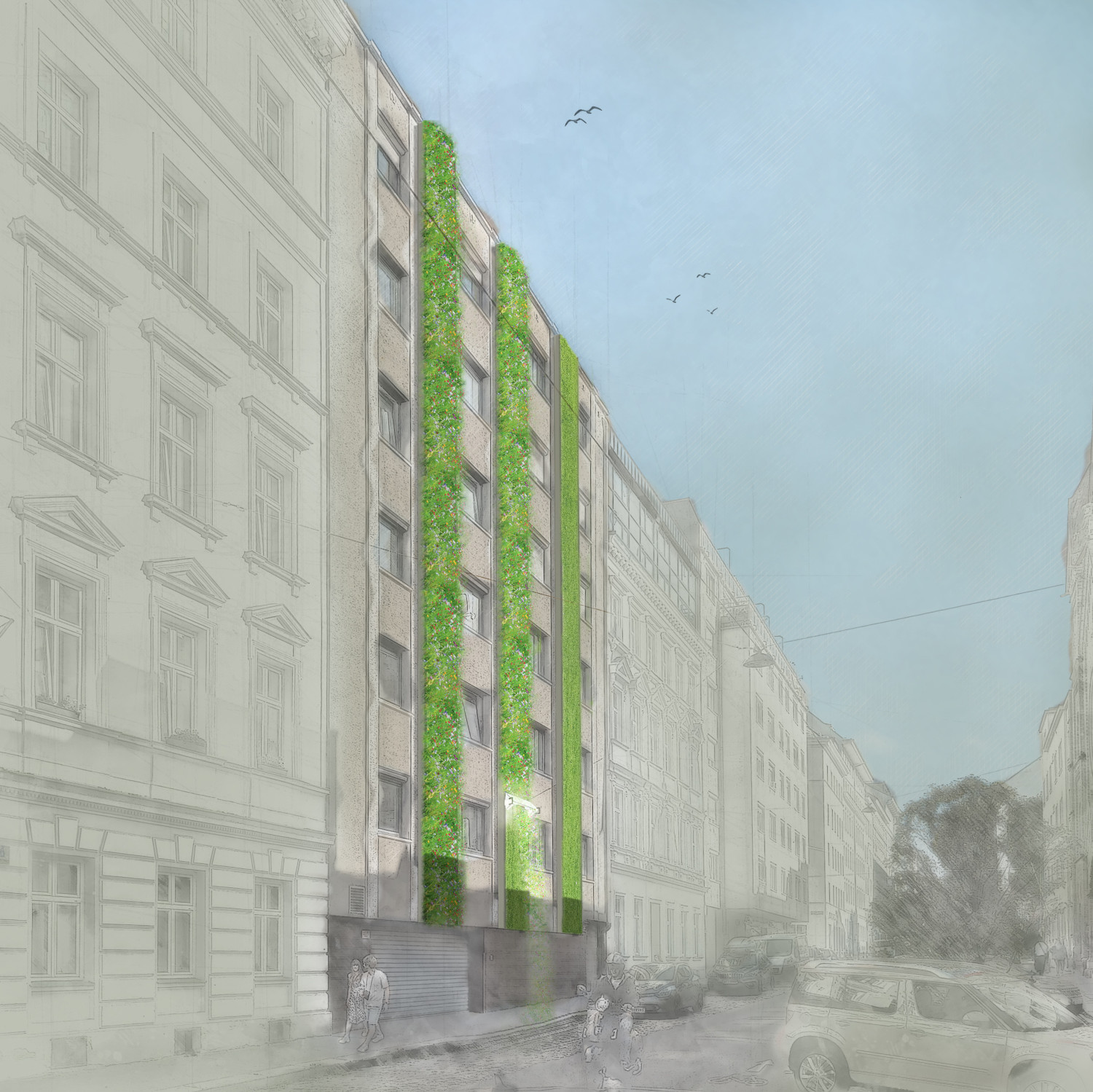

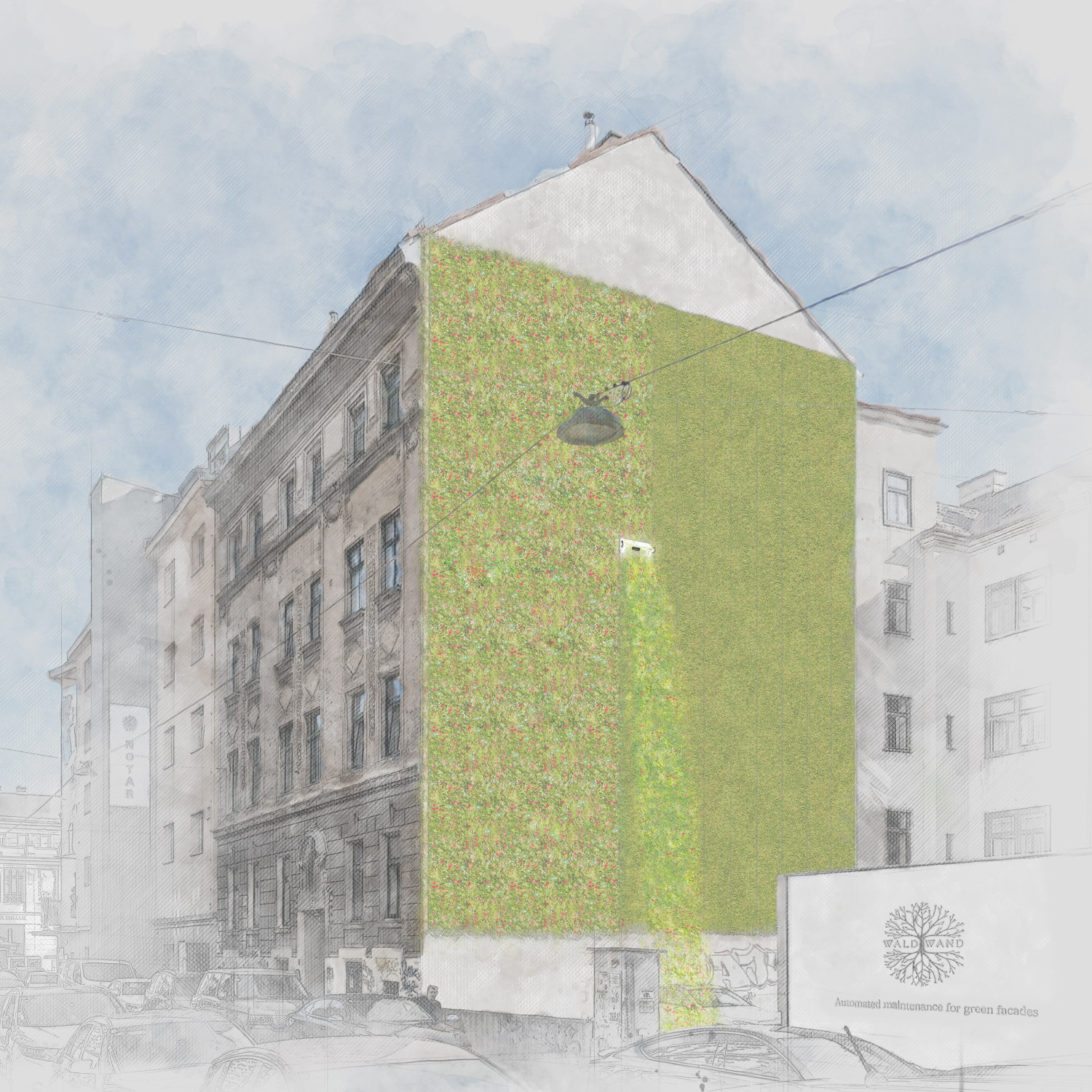
You're currently working on a special project together – Waldwand. What’s the idea behind it
Jonathan: With Waldwand, we want to make green facades more attractive. There are two different types: the traditional method, where climbing plants are planted in the ground and grow up the façade, and the façade-bound greening, where plants grow directly on the façade – that’s what we’re focused on. It’s typically the more expensive and maintenance-intensive model, but it’s becoming increasingly popular because you see immediate results and the façade is green right away. We want to automate the maintenance of the plants with the façade module we’ve developed, thereby reducing upkeep costs. A robot will move up the façade so that no human needs to climb up with ropes anymore.
Piers: Through evaporative cooling, the microclimate can become 2 to 5 degrees cooler with a green façade, depending on the size. That’s quite significant when you think about it. Cities not only get cooler but also quieter, as the plant modules absorb sound waves. Plus, sunlight is less strongly reflected. There are many societal benefits that come with green façades. Although façade greening systems have been around for a long time, implementation is still quite limited. That’s why it’s important to drive innovation in this area, and that’s what we’re doing by automating maintenance and distinguishing ourselves from existing companies. Our goal is to make green façades accessible to the masses and contribute to changing the urban landscape as we know it.
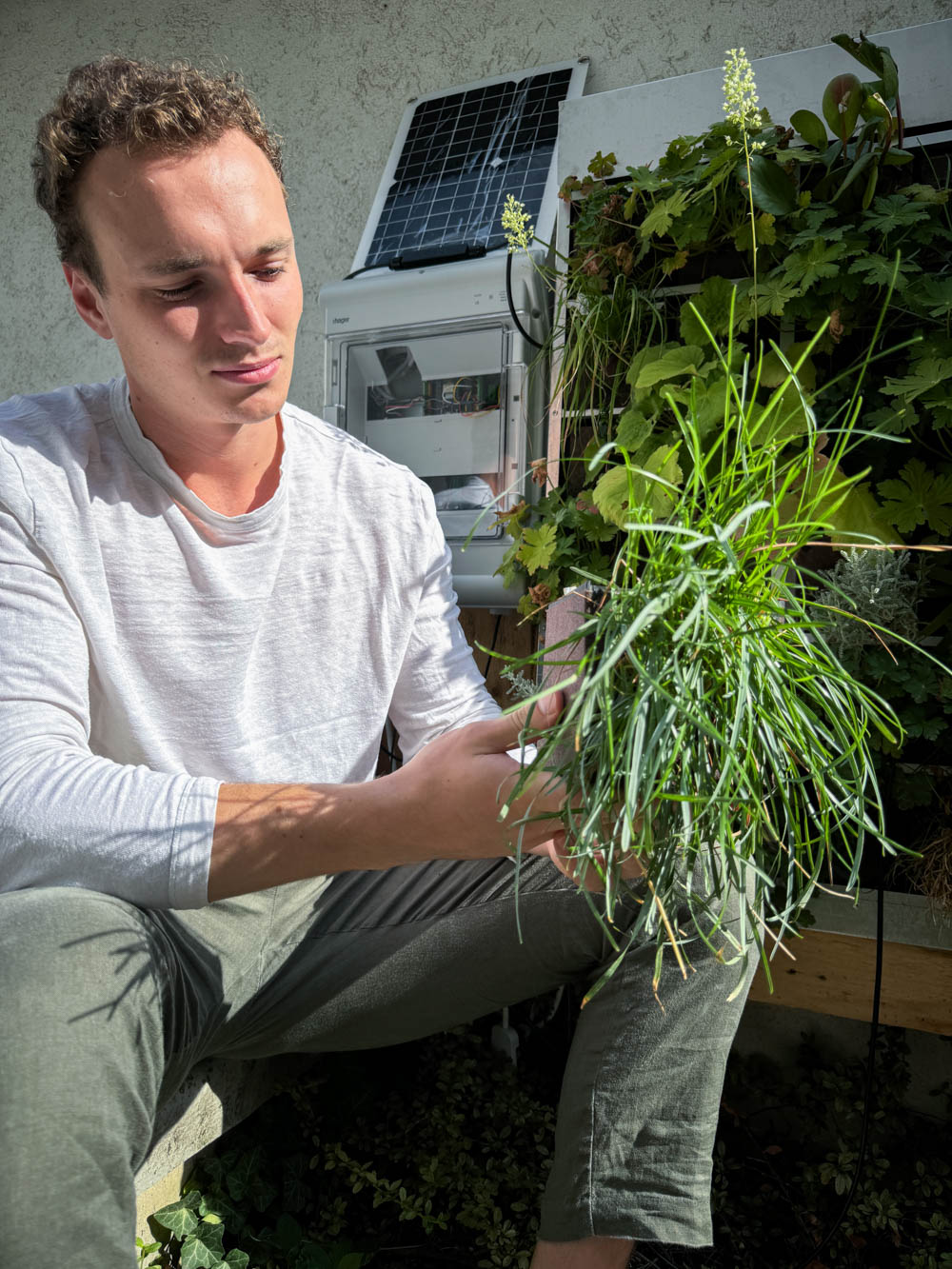

What are you currently working on, and what are your next steps?
Jonathan: We built a first prototype for the façade module with automated irrigation here at Happylab and have been refining it over the past few months. We’ll soon test this updated version on a larger scale. We already have a design for the maintenance robot in the drawer, and we want to evaluate it with our new CTO (Chief Technology Officer) to determine which is the best and most cost-effective version.
Piers: In the near future, we want to have our first customer. That’s why we’re working on realizing a larger pilot project. With the two prototypes we’ve built so far, we can see how well our development is working. But we’ll soon need a larger project to get a better sense of the market and figure out how we can scale the concept.
Jonathan: We’re actively looking for partners and motivated people who are eager to shape the future with us.
Can you tell us how the maintenance robot will work? P
Piers: The current state of green façade maintenance requires a lift and two workers who trim the plants by hand. That’s relatively time-consuming and costly. We can automate the process by installing two rails on the sides of the modules, allowing a robot to move up and trim the plants.
In the first development stage, the robot will simply move up and cut the plants – that’s relatively straightforward. In the second and third stages, the robot will also be able to replace individual plants. This is possible because we divide the façade modules into individual subsystems, so you don’t have to remove the entire module to replace one plant. We’ll likely use image recognition software to enable the robot to identify dead plants.


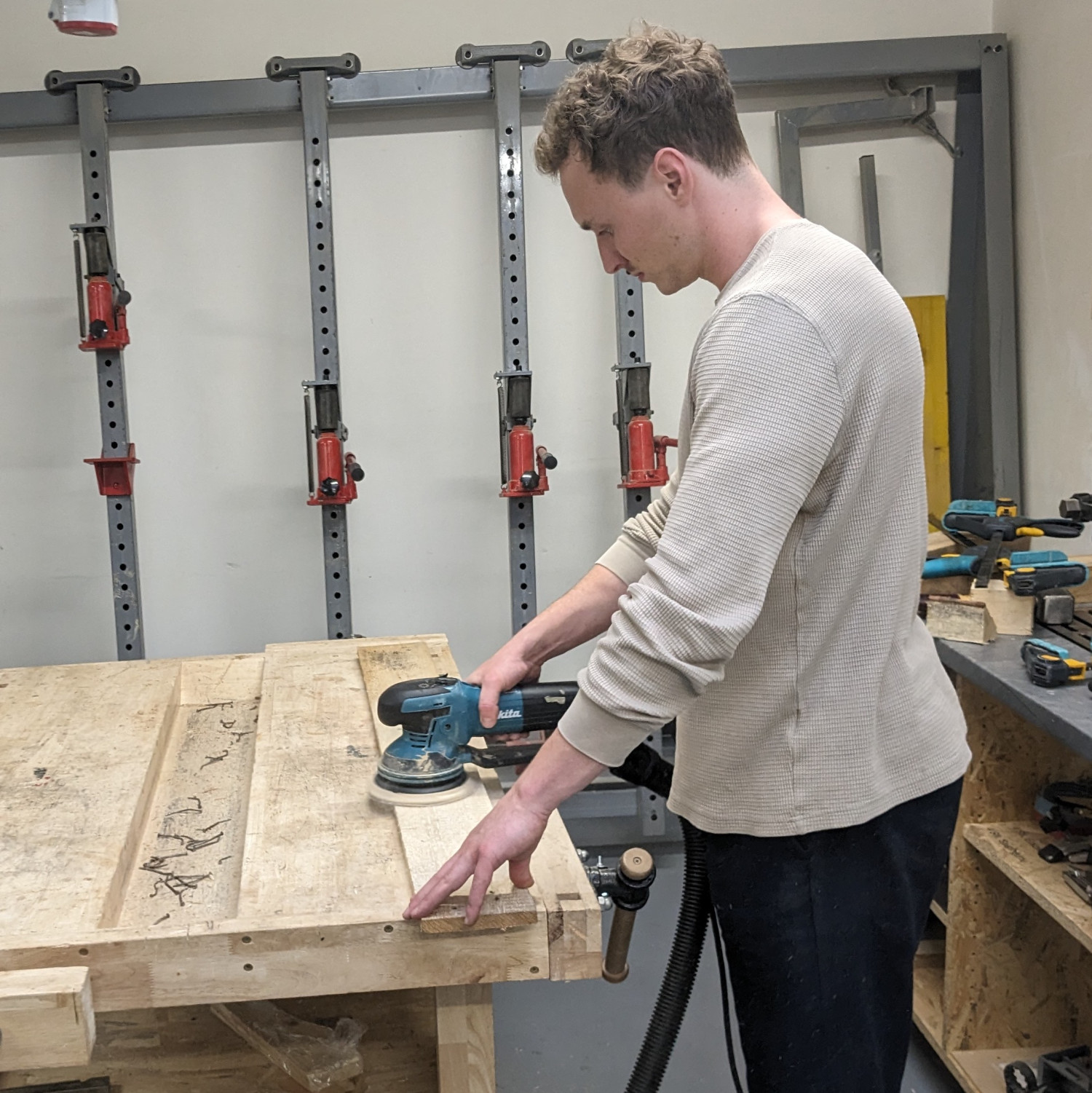
Which machines at Happylab have you used during the development process?
Jonathan: We’ve done a lot of 3D printing, especially in the beginning. Otherwise, we’ve used nearly all the workshop areas. We used the metal workshop and the metal laser for the module. And we’ve especially made use of the co-working space. We’ve been here almost every day since March (laughs).
What are the biggest challenges in the development process?
Jonathan: The biggest challenge, I think, is bringing everything together. We’re involved in architecture, dealing with plants, and we need a mechanical engineer for the development of the robot. So, there are many parts that have to come together for the project. Individually, none of these parts may be overly complex, but integrating them is a big challenge.
Piers: I definitely agree. The keyword is coordination. It’s sometimes difficult because there are so many different technical aspects to consider. A challenge that every start-up probably faces is staying motivated, even when you’re not seeing much return at the beginning. You have to invest a lot of time and energy into a project like this before it bears fruit. For me personally, it’s a big challenge to work with so much uncertainty and risk. At the same time, it’s rewarding to work with a team of people who share the same vision.
What advice would you give to people who have an idea and want to develop a product but aren’t sure where to start?
Piers: Just start! It might sound generic, but it’s simply true. If you have an idea, you need to have the courage to just begin – no matter how things look at the start or what others think of it. There are so many examples of successful stories, and they all begin this way. You might sometimes have to be honest with yourself and realize if it’s not the right path for you. But it would be a shame not to try!
Jonathan: If you believe in the product and have background knowledge in the industry you want to work in, then just start – I completely agree with Piers. And maybe find someone you can work well with, someone who complements you. You can motivate each other to stick with it and not get sidetracked or discouraged when things don't go well.
Piers: True! Finding someone who shares the same passion can make a big difference. It keeps motivation high and can significantly increase the chances of success. I believe having a good team is a key factor.

Where do you want your journey to go? What are your visions for the next few years?
Jonathan: That’s a good question. We think a lot about it. We want to show people that there’s a huge benefit for all of us if we live in green cities. Our goal is to green as many façades as possible and maintain them. When you come to us, you get a hassle-free package – you don’t have to worry about anything. The plants are kept alive, and the façade looks good – including all the benefits that come with a green façade. Besides the ones Piers already mentioned, there’s also the added insulation provided by the plants' substrate.
Piers: It’s particularly important to me to serve a societal purpose. Improving the lives of a large number of people, even if only in a small way. Green façades have the potential to enhance our quality of life and protect us from the effects of climate change. I hope that more greenery in cities will encourage people to act more consciously and make more sustainable choices.
Thank you for the interview and good luck for your future endeavours!